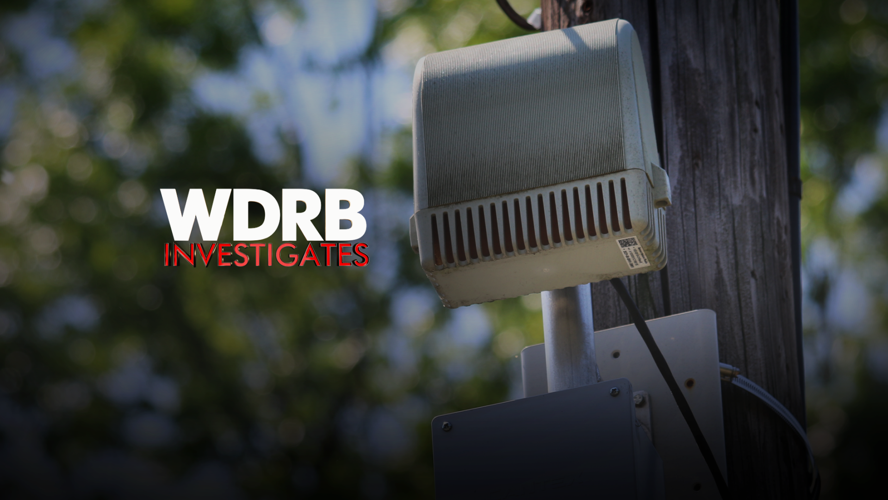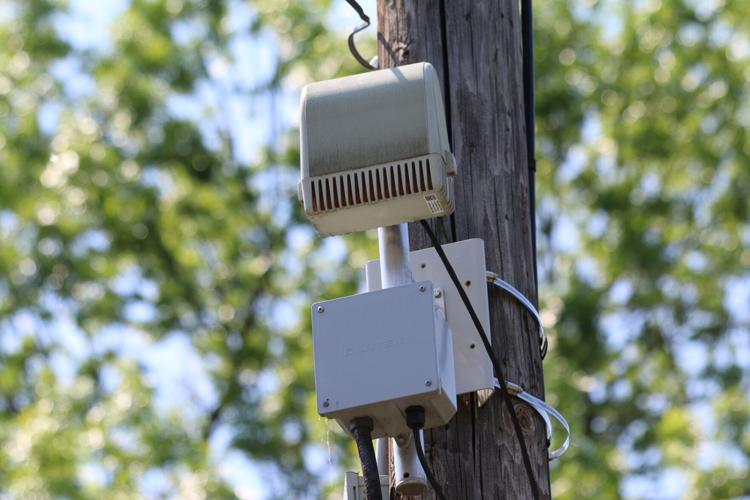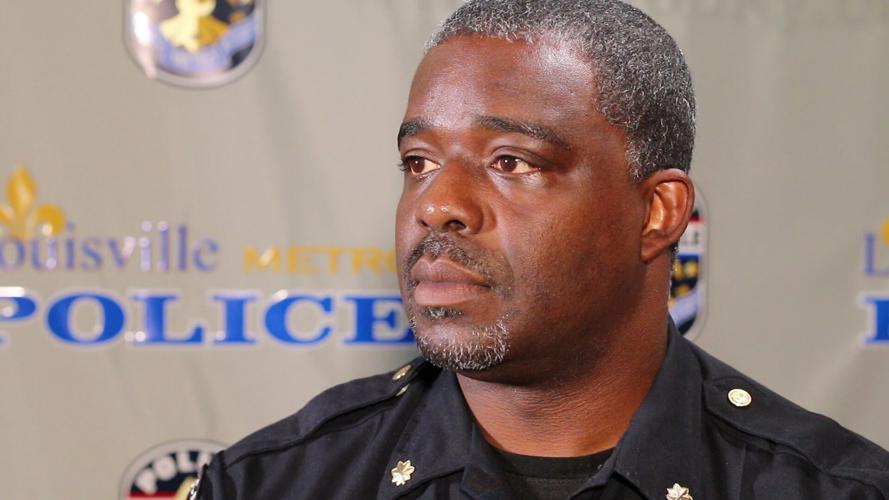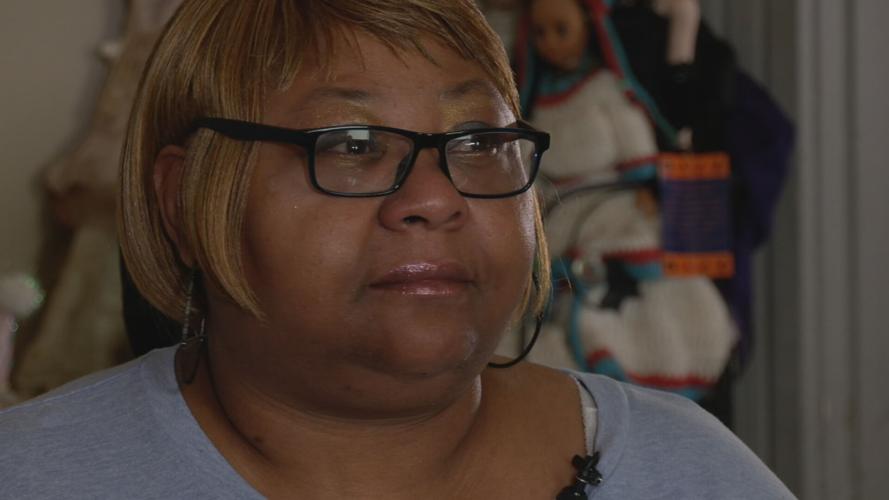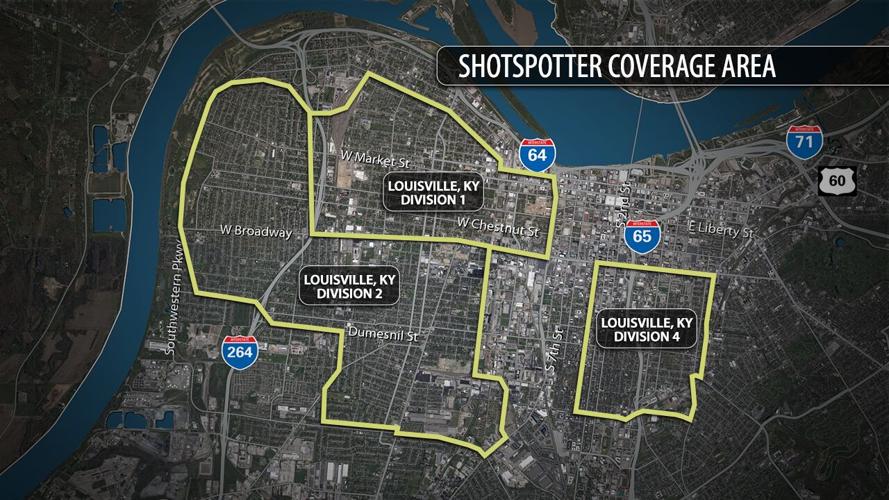LOUISVILLE, Ky. (WDRB) -- When Latissha Batts hears gunfire near her house, sometimes just feet from her front door, she doesn't call police. At least, not anymore.
Batts, like many of her neighbors living in Louisville's West End, has learned to live with sporadic gunfire. But that acceptance creates a problem for Louisville Metro Police: People don't always call 911 when they hear gunshots.
"If I called 911 every time I heard gunshots, my phone would be dead," she said.
To track unreported shootings in Louisville, LMPD five years ago began installing technology called ShotSpotter, a system of sensors constantly listening for gunshots.
The system notifies dispatchers, who can then send officers to locations where shots have been fired. And last year, city leaders approved doubling the footprint of ShotSpotter, from six square miles in West Louisville to 12.
But is it worth it? A WDRB analysis found that arrests made by Louisville police as a direct result of the technology aren't on par with cities of a similar size.

A ShotSpotter microphone located in the Shawnee neighborhood (WDRB photo).
ShotSpotter detected 14,629 gunshots in six "high-crime" areas from February 2020 to February 2022, according to data obtained under Kentucky's open records law. LMPD reports during the two years from June 2019 to June 2021 show ShotSpotter has directly led to 59 arrests: 43 for gun or violent crimes and 16 drug-related offenses.
That equates to an arrest rate of about .004% on ShotSpotter hits.
By comparison, ShotSpotter touts successes in similarly sized, and even smaller, cities that eclipse Louisville's arrest figures. In Columbus, Ohio, it cited 133 arrests connected with the technology in a 16-month period between February 2019 and May 2020. Bakersfield, California, notched 50 arrests in the first year of ShotSpotter. Toledo, Ohio, had 70 arrests in the first 10 months of the program.
Louisville police officials defend their use of ShotSpotter, saying it's just one part of a broader approach to police work in a high-tech age.
The city's original request for proposals does not mention arrests as a key metric of the system.
"The Louisville Metro Police Department (LMPD) has determined that detecting and intervening in illegal firearm use is a top priority. Metro, via the LMPD, is seeking a system that will enhance its ability to interdict illegal firearm activities and enhance public safety," the RFP stated.
LMPD Maj. Corey Robinson admits there have not been "not many" arrests but he said the technology does allow officers to determine where shots come from. Then, using Flock license plate cameras, police can see if any stolen cars are in the area.
"We can corroborate those two things together and then put officers in the right place at the right time," Robinson said. "When we get people that don't want cooperate with us, we can use technology in their place. And it's nondiscriminatory ... it doesn't see color or doesn't see a gender or anything."

LMPD Major Corey Robinson (WDRB photo).
LMPD first rolled out ShotSpotter as a crime prevention tool in 2017. Initially, 6 square miles of the city were covered by the sensors strategically placed in "high-crime" areas such as the Russell, Parkland and California neighborhoods.
"One of the big numbers that is staggering is the runs that we make. Well over 90% of those do not have a call for service with them," Robinson said. "So keep in mind, we work in the areas where we're still trying to build trust in the community so that community members, for whatever reason, may not call the police all the time."
At least some of the gunshot detections could be fireworks or other "loud bangs" particularly on holidays such as July 4th and New Year's Eve, he said.
Privacy Concerns
LMPD said Flock cameras are helping get results when combined with ShotSpotter. Approved last year, the Flock Safety System is a series of cameras used as license plate readers installed all over the city. The cameras automatically read license plates of passing vehicles and alert dispatchers if there are warrants for the registered owner.
"It's possible for the ShotSpotter to trigger and that will automatically pull the cameras to that area," LMPD Chief Erika Shields said. "So you can start getting a visual on the location that is having the gunfire. It's essential to our efforts."
According to the documents, about 28% of the time when LMPD officers respond to a ShotSpotter call, they are able to find bullet casings. Officers collect the casings for evidence and can run them through a national ballistics database to determine if the gun that fired the shots has been used previously in other crimes.

Shotspotter coverage area
While police said these new technologies can help solve crimes faster and supplement a depleted work force, privacy advocates worry about the increase in surveillance.
"We've seen a ton of these technologies emerge and become more common place," said Kate Miller, advocacy director for the ACLU of Kentucky. "We really have — in a short period of time — moved to a state of constant surveillance. It changes the landscape of our democracy to feel secure in your own home."
Robinson said the ShotSpotter sensors aren't actively listening 24/7. Instead, they only alert when a gun is fired and do not have the ability to listen to conversations.
"Infringement upon Fourth Amendment rights is always a huge concern of ours," Robinson said. "That's something we're always looking at. It's very fluid and organic. We're always working with our legal team to make sure we're not being too intrusive."
Recent Success vs. Cost
Louisville Metro government spent $620,000 to double the coverage of the ShotSpotter network. Invoices obtained by WDRB show it costs $68,250 per square mile, per year to maintain and operate the system, or $822,000 annually. That does not include "expert witness testimony" during trials, for which ShotSpotter bills $350.00 an hour.
LMPD has touted the success of ShotSpotter in recent months, repeatedly saying it's the primary means by which officers were dispatched to a number of calls, including shootings and murders.

Latissha Batts' father was killed by a stray bullet in 2019 (WDRB photo).
On June 12, for example, LMPD said officers arrived on a ShotSpotter call near the intersection of 26th and Chestnut streets, where police found an elderly man who had been struck by a stray bullet.
The month before, an LMPD officer responded to Hale Avenue on a ShotSpotter run to find a teenager who had been shot inside of his home.
On Dec. 21, officers responded to the area of 35th Street and Broadway to find a man shot after an alert via ShotSpotter.
It is not clear if the ShotSpotter notifications on these incidents were the only notification emergency personnel received regarding the shootings. No arrests have been announced in those three cases. Robinson said at least a dozen illegal guns have been taken off the street this year because of ShotSpotter.
People like Batts, who live where the gunfire is most frequent, just want it to stop.
"I think it's a good thing they come," Batts said. "But they can blink and it's like 'I Dream of Genie' once they get here, the shooter is just going to drive down the street, and the cops just pick up shell casings."

